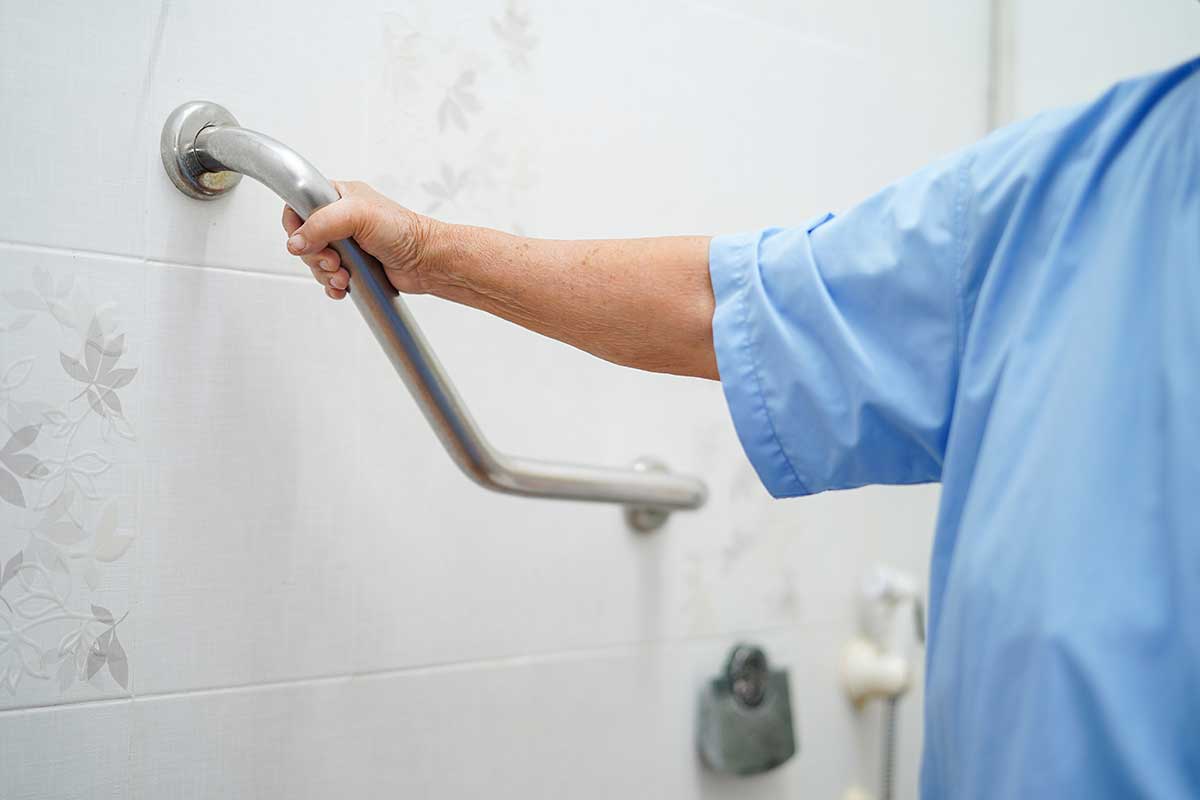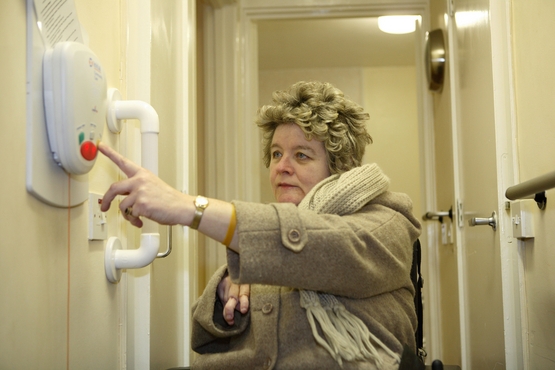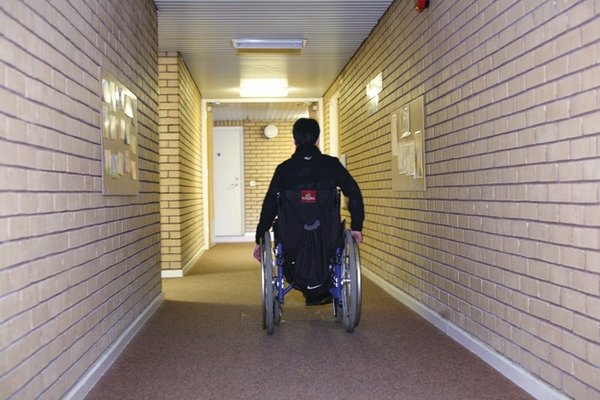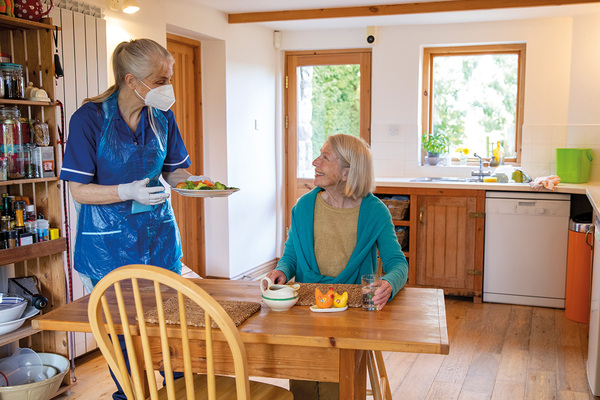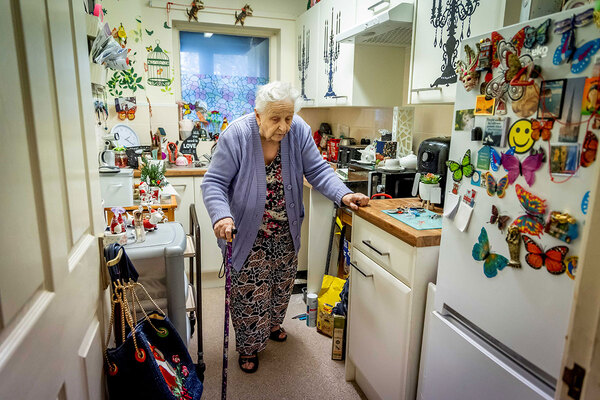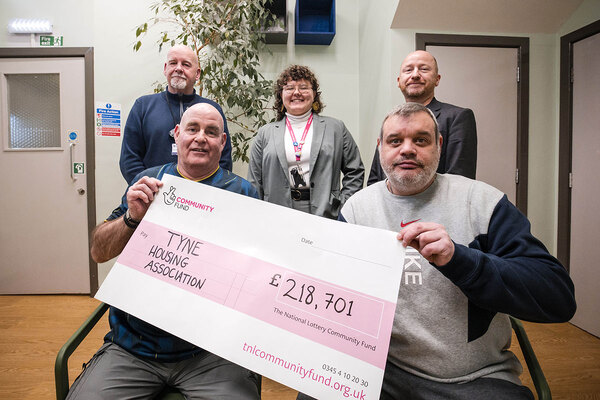
Paul Smith is director of Foundations, the national body for home improvement agencies
More disabled people live in social housing than any other tenure. So why are home adaptations given a low priority?
Our new research reveals a mixed picture of home adaptations and points at ways to do better, writes Paul Smith
Social housing, more than any other tenure, is where disabled people live. Some 54% of housing association tenants have a long-term illness or impairment and 18% of new lettings are to someone with a defined disability. Yet 56% of those needing adaptations do not have them.
If you’re a social tenant who is disabled by their home, then getting the adaptations you need can be tricky. You will probably start by contacting your local social services department and join a waiting list for an assessment by an occupational therapist. If all goes well, you will then be referred on to the housing department to make an application for a Disabled Facilities Grant (DFG). In due course, they will contact your landlord to seek permission.
For some, a level-access shower, stairlift or ramp will soon follow – but for too many, there are delays and complications. Working with Habinteg and Anchor, we set out to find out why and come up with some recommendations to improve the situation.
We surveyed and spoke to many people across the country and found splits in legal responsibility, a confusing pattern of funding, a postcode lottery in the type of services provided, complex customer journeys and frustration for staff in local authorities and associations alike.
For many associations, we found that home adaptations have a low priority. They are seen as a minor operational issue – done cheaply and routinely ripped out again on change of tenancy. They are rarely part of a long-term strategic plan to make the stock work for everyone. We also saw examples of associations charging tenants a fee when they ask for permission to adapt and blanket policies to refuse adaptations in general needs stock.
For those managing adaptations, they reported difficulties in understanding the different processes for each local authority and the varying timescales involved.
So with all this confusion and complexity, how do we get to a position where tenants are living in homes that don’t disable them and landlords are enabled to invest in the accessibility of their stock? Our main recommendation is to use landlord applications for DFGs.
Landlord applications have been a little known part of the DFG regulations since they were introduced in 1990, but they provide a way to significantly improve the adaptation journey for tenants. To start with, the tenant would approach their landlord to discuss the suitability of their home and the options available. For some, that may be a move but for many it will require home adaptations – but both tenant and landlord will be able to discuss and agree the best solution from the outset.
Depending on the complexity and urgency of the situation, it may be that an occupational therapy assessment is required – either through social services, an in-house OT or a private OT.
But the landlord will be central to those conversations and be able to balance the needs of the tenant with the suitability of the property.
With an assessment of need agreed, the landlord can then apply for a DFG directly to the local authority. Unlike an application made by a tenant, landlord applications aren’t means tested. However, the local authority could request nomination rights should the tenancy change within five years.
By making the application directly, the landlord can arrange the contractor, which will carry out the work and ensure that it is done in accordance with their asset management policies.
As the landlord will already hold all the health and safety information like asbestos survey data, this will aid compliance. A landlord could also choose to invest a little extra into the works to make the adaptation more sustainable – providing nicer tiles or more unobtrusive fittings such as grab rails that wouldn’t be rejected out of hand by the next tenant and ripped out in the voids process.
The cost of making the application and supervising the works can also be added on as a fee, which should enable a landlord to invest in staff to support tenants throughout the process. For the tenant, this would mean they have a single point of contact and would not have to chase progress between different organisations.
Making this work will require housing associations and local authorities to work collaboratively and develop different ways of working. It will need trust and goodwill on all sides, but the current situation that many tenants find themselves in is unsustainable. At a time when repairs are in the spotlight, it’s not difficult to imagine adaptations becoming the next big issue.
The solution has been hiding in plain sight for years. It’s already part of the toolkit – waiting for landlords to start making the applications. We’ve produced a generic application form that is available to download along with a detailed report that makes other recommendations.
Paul Smith, director of Foundations, the national body for home improvement agencies
Sign up for our care and support bulletin
Already have an account? Click here to manage your newsletters
